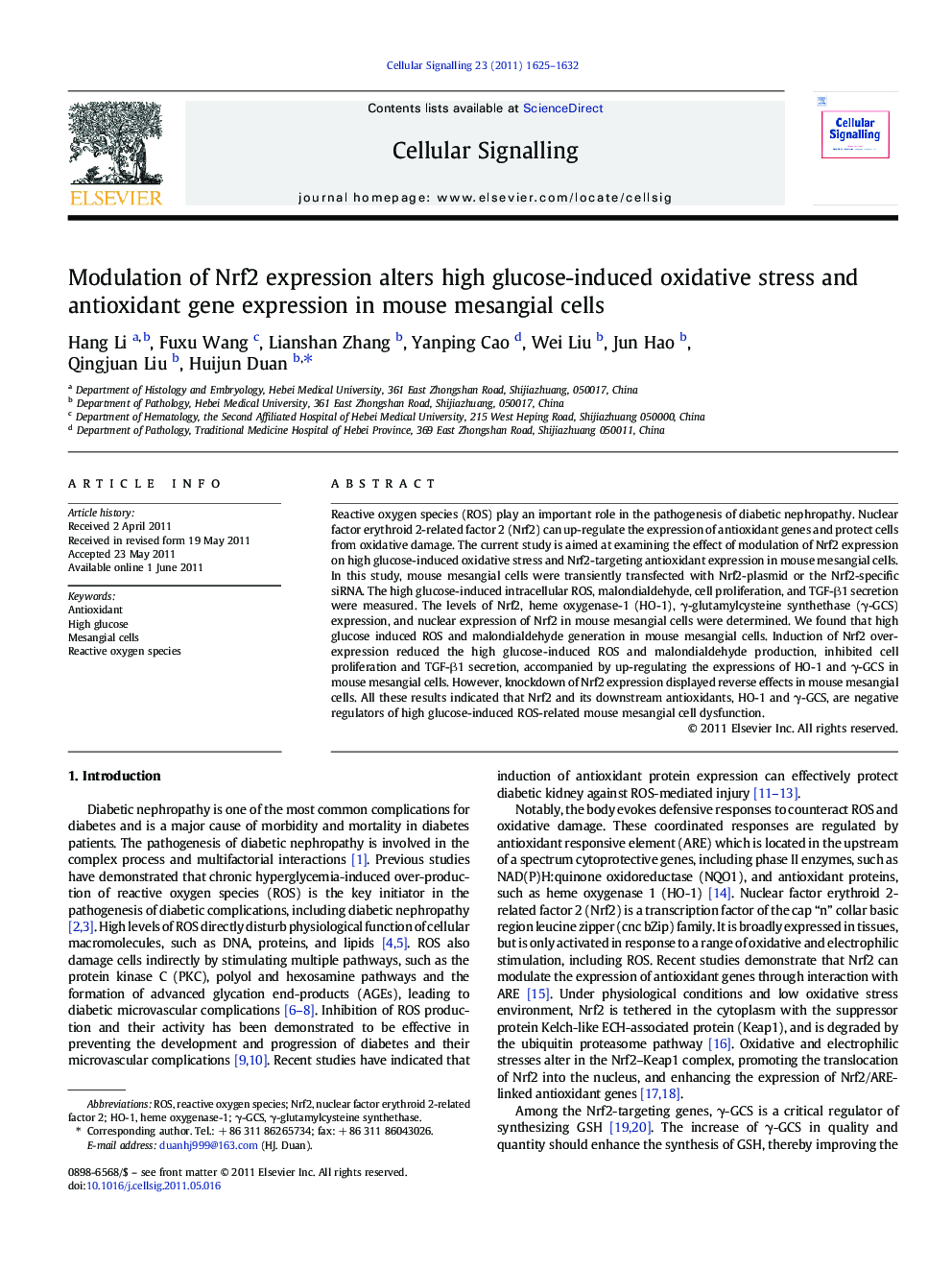| Article ID | Journal | Published Year | Pages | File Type |
|---|---|---|---|---|
| 1964747 | Cellular Signalling | 2011 | 8 Pages |
Reactive oxygen species (ROS) play an important role in the pathogenesis of diabetic nephropathy. Nuclear factor erythroid 2-related factor 2 (Nrf2) can up-regulate the expression of antioxidant genes and protect cells from oxidative damage. The current study is aimed at examining the effect of modulation of Nrf2 expression on high glucose-induced oxidative stress and Nrf2-targeting antioxidant expression in mouse mesangial cells. In this study, mouse mesangial cells were transiently transfected with Nrf2-plasmid or the Nrf2-specific siRNA. The high glucose-induced intracellular ROS, malondialdehyde, cell proliferation, and TGF-β1 secretion were measured. The levels of Nrf2, heme oxygenase-1 (HO-1), γ-glutamylcysteine synthethase (γ-GCS) expression, and nuclear expression of Nrf2 in mouse mesangial cells were determined. We found that high glucose induced ROS and malondialdehyde generation in mouse mesangial cells. Induction of Nrf2 over-expression reduced the high glucose-induced ROS and malondialdehyde production, inhibited cell proliferation and TGF-β1 secretion, accompanied by up-regulating the expressions of HO-1 and γ-GCS in mouse mesangial cells. However, knockdown of Nrf2 expression displayed reverse effects in mouse mesangial cells. All these results indicated that Nrf2 and its downstream antioxidants, HO-1 and γ-GCS, are negative regulators of high glucose-induced ROS-related mouse mesangial cell dysfunction.
Research highlights► Mouse mesangial cells were transfected with Nrf2-plasmid or the Nrf2-specific siRNA. ► The levels of Nrf2, HO-1,γ-GCS expression in mouse mesangial cells were determined. ► They are negative regulators of high glucose-induced ROS-related cell dysfunction.
